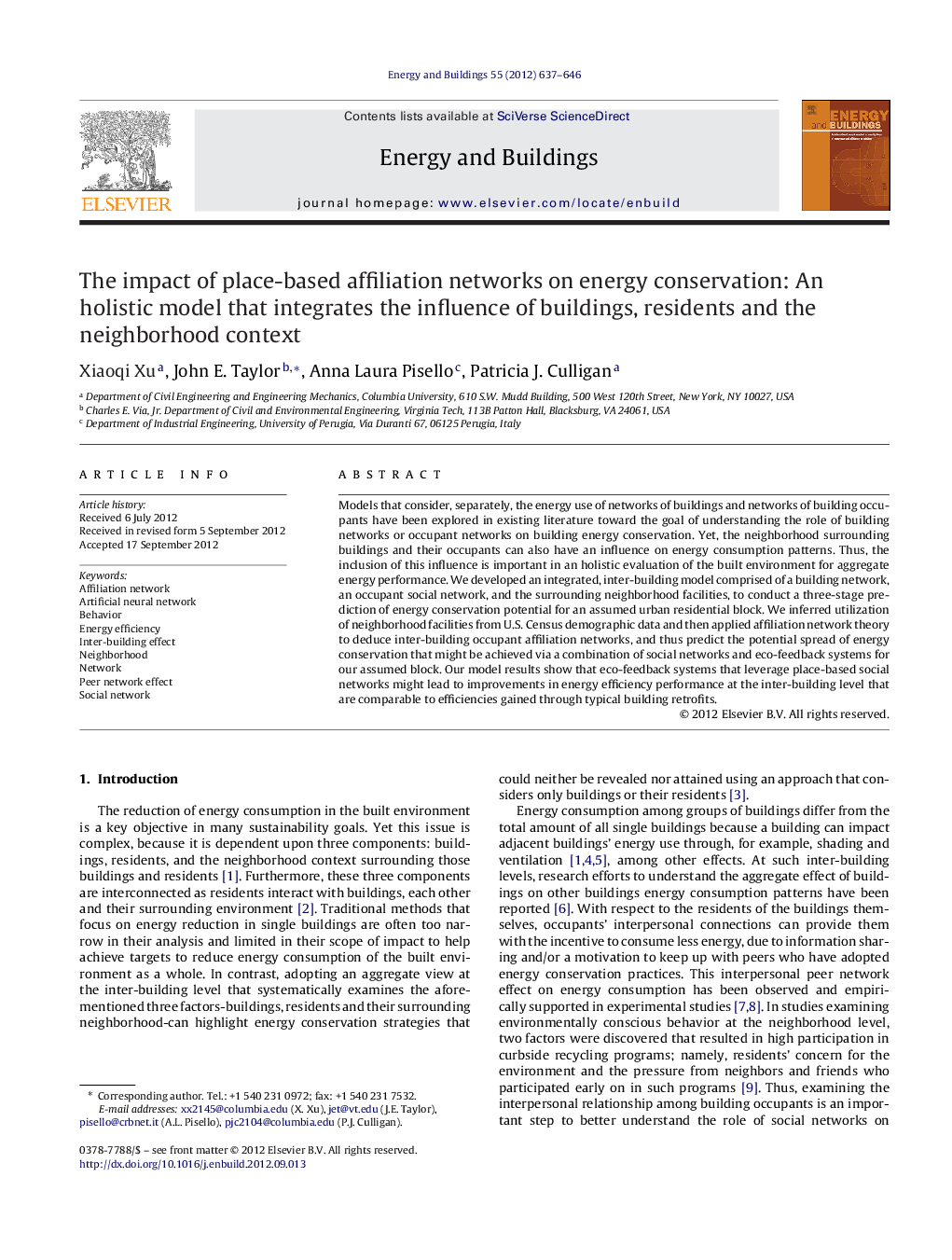| کد مقاله | کد نشریه | سال انتشار | مقاله انگلیسی | نسخه تمام متن |
|---|---|---|---|---|
| 263873 | 504085 | 2012 | 10 صفحه PDF | دانلود رایگان |

Models that consider, separately, the energy use of networks of buildings and networks of building occupants have been explored in existing literature toward the goal of understanding the role of building networks or occupant networks on building energy conservation. Yet, the neighborhood surrounding buildings and their occupants can also have an influence on energy consumption patterns. Thus, the inclusion of this influence is important in an holistic evaluation of the built environment for aggregate energy performance. We developed an integrated, inter-building model comprised of a building network, an occupant social network, and the surrounding neighborhood facilities, to conduct a three-stage prediction of energy conservation potential for an assumed urban residential block. We inferred utilization of neighborhood facilities from U.S. Census demographic data and then applied affiliation network theory to deduce inter-building occupant affiliation networks, and thus predict the potential spread of energy conservation that might be achieved via a combination of social networks and eco-feedback systems for our assumed block. Our model results show that eco-feedback systems that leverage place-based social networks might lead to improvements in energy efficiency performance at the inter-building level that are comparable to efficiencies gained through typical building retrofits.
► We develop an holistic energy consumption model at the inter-building level.
► We apply artificial neural networks to replicate and expand EnergyPlus simulation.
► Place-based social networks are deduced by affiliation to neighborhood facilities.
► Social networks’ effect on energy conservation is calculated using experiment data.
► Leveraging social networks has comparable energy savings to building retrofits.
Journal: Energy and Buildings - Volume 55, December 2012, Pages 637–646